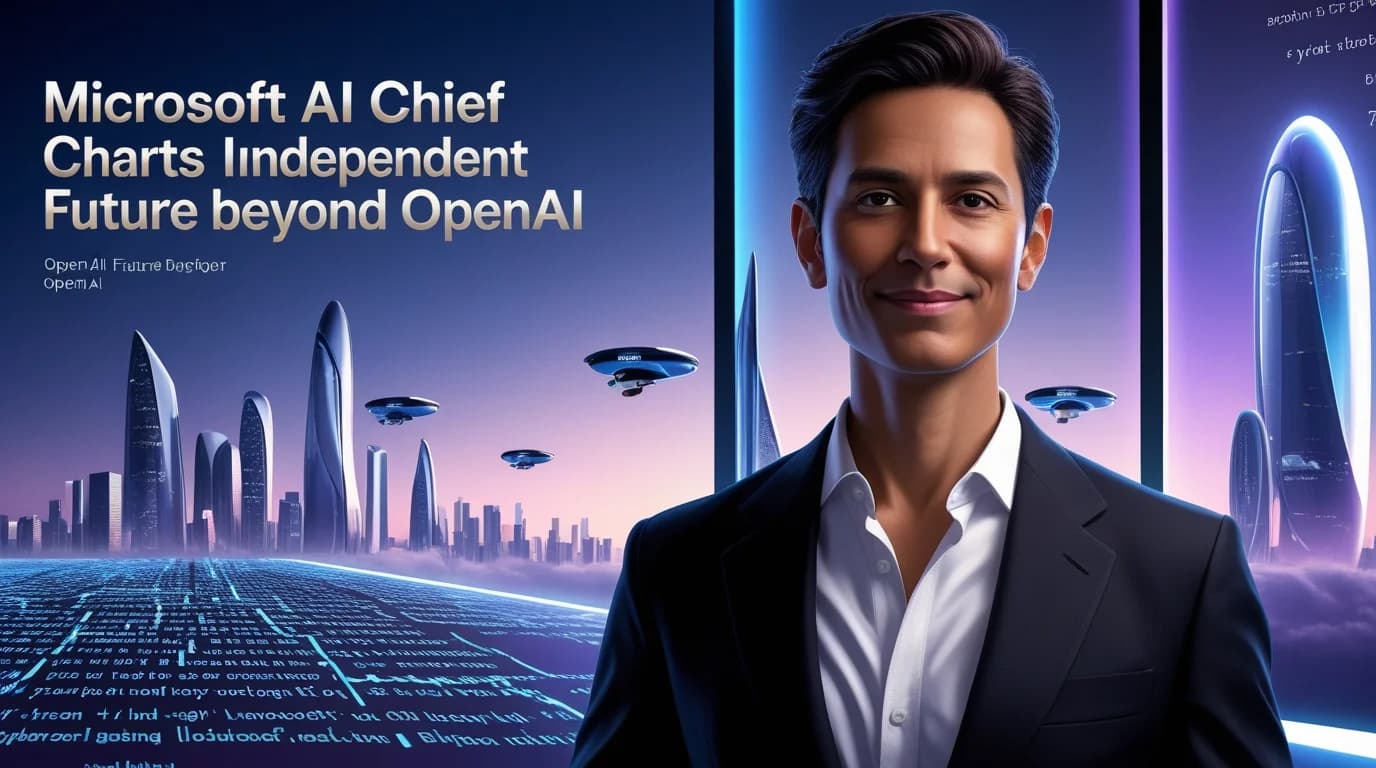
Microsoft AI chief charts independent future beyond OpenAI
November 7, 2025
editorial_staff
Microsoft is shifting gears. Microsoft’s head of its AI division has laid out a new roadmap for developing artificial intelligence systems that does not depend solely on its longtime partner OpenAI. This marks a clear change in the tech giant’s strategy as it seeks to broaden its AI ambitions.
In the newly detailed plan, Microsoft declares it is ready to pursue its own large-scale AI models and platforms. Under the revised approach, the company is free to use OpenAI’s intellectual property when needed but is no longer bound to rely exclusively on that partnership. The move comes after Microsoft unveiled its first internal AI models for text, voice and image generation earlier this year.
Mustafa Suleyman, head of Microsoft’s AI efforts, described the company’s vision of “humanist superintelligence”—an advanced AI designed to serve and assist humans rather than replace them or operate unchecked. This includes tools that help individuals learn, collaborate, and be productive, as well as applications in healthcare and scientific research. He emphasized that humans must remain central, with AI existing as a “subordinate, controllable” system rather than an open-ended autonomous entity.
The new roadmap signals that Microsoft sees itself stepping into a more competitive role in the AI field, one in which it can partner, or act independently, rather than relying on OpenAI’s models alone. It follows tensions and restructuring within OpenAI, and broader strategic moves by Microsoft to diversify its AI relationships and capabilities.
Among the key shifts: Microsoft will accelerate development of its own core models, strengthen its in-house AI infrastructure, and explore new commercial and enterprise opportunities around these technologies. At the same time, the company still retains the option to collaborate, but the emphasis is clearly on independence and flexibility. According to the blog post from Suleyman, the company is committed to AI that supports human goals, leverages large compute and data resources, and remains under firm human oversight.
In short, Microsoft is preparing for a future where its AI strategy is no longer defined by a single partnership. Whether collaborating or forging ahead alone, the company has laid out a blueprint to build advanced AI with greater autonomy, while emphasising human-centric design and control.